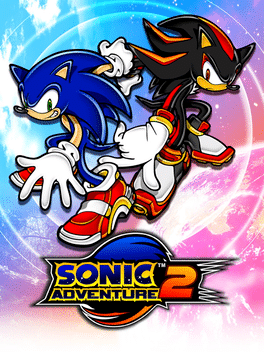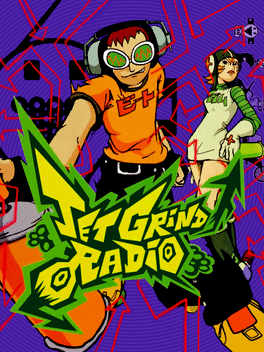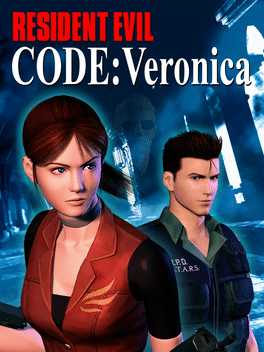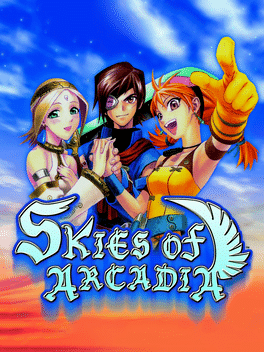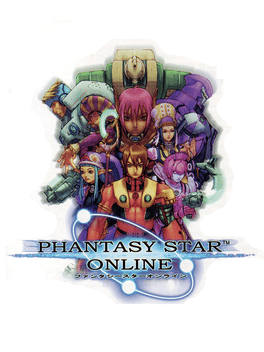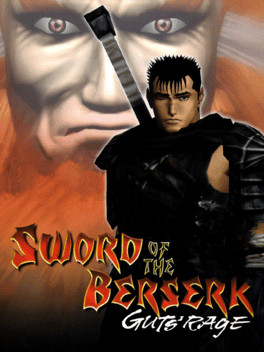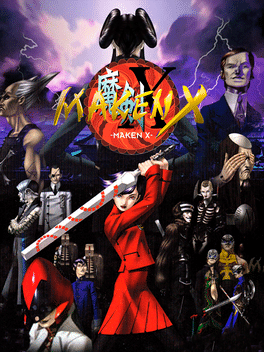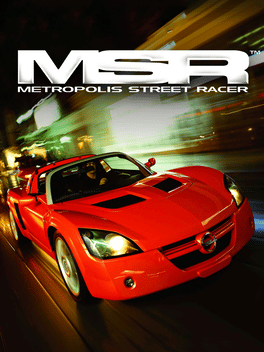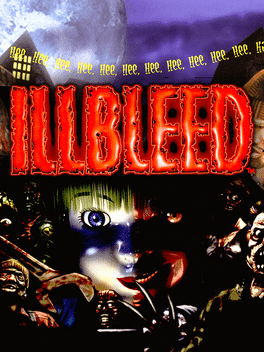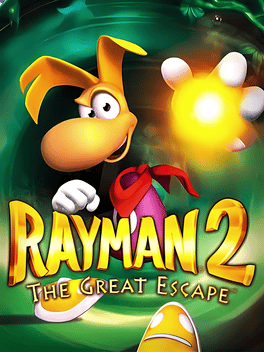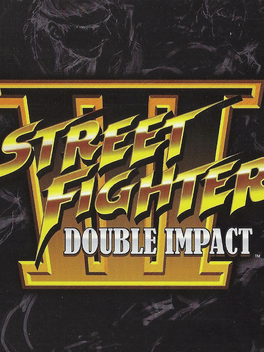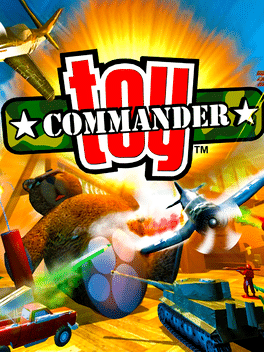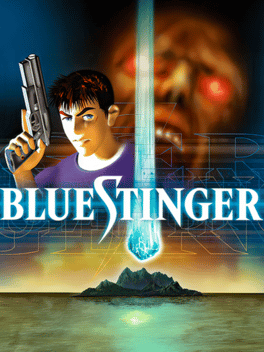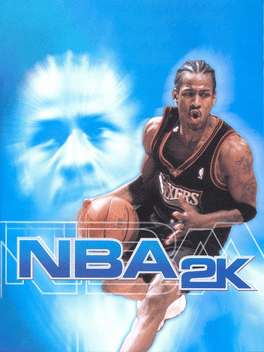Most Popular Dc Games
-
Sonic Adventure
1998
Sonic Adventure
1998
star 6Sonic Adventure is a 3D platformer video game in the Sonic the Hedgehog series. The player can control six characters from the Sonic universe, each with their own gameplay and point of view of the story. The game is divided up into two types of levels: Action Stages and Adventure Fields. The division of Action Stages and Adventure Fields are a serious departure from all previous Sonic games. Adventure Fields are non-linear game stages that contain very few items, generally designed for puzzle solving, exploration and plot advancement. Action Stages are more speed based and have Rings scattered in them. Sonic Adventure was the top-selling Dreamcast game and received a sequel in 2001, marking the 10th anniversary of the Sonic the Hedgehog series. -
Sonic Adventure 2
2001
Sonic Adventure 2
2001
star 7.6Sonic Adventure 2 is the sequel to Sonic Adventure. It was the final Sonic game for the Dreamcast after Sega discontinued the console. Two new playable characters were introduced, Shadow and Rouge, who would go on to become two of the most recurring characters in the Sonic series. The story features good vs evil: Sonic, Tails and Knuckles attempt to save the world, while Shadow, Doctor Eggman and Rouge attempt to conquer it. The levels are divided into three gameplay styles: fast-paced platforming for Sonic and Shadow, multi-directional shooting for Tails and Eggman, and action-exploration for Knuckles and Rouge. -
Jet Grind Radio
2000
Jet Grind Radio
2000
star 7.8The government is attempting to silence the kids of Tokyo, but with their Overdrive Magnetic-Motor Skating Shoes, the cops will have to catch 'em first. The Jet Grind Radio program keeps the kids unified and inspired to fight for their rights of expression, which includes graffiti art. Grab your spray cans and design your own piece on one of the immense walls in the 3D, interactive city. You might be forced to protect your territory from adversaries that want to take over your neighborhood. Join up with like-minded hip individuals that will help you keep your area the way you want it. The cops will be after you too, so you'll have to be quick. The 10 cartoon-style characters are pumped up with polygons so they come alive in 3D on Dreamcast. Uniqueness is key to these kids and each character stands apart with exclusive abilities and style. They like to show off too, and with 18 missions, there's plenty of time to impress. It's fast, it's fun, and it's definitely funky. -
Resident Evil Code: Veronica
2000
star 6.9Resident Evil Code: Veronica is the fourth video game in Capcom's Resident Evil survival horror series. The game continues the survival horror gameplay of its predecessors: the protagonist explores the surroundings, fighting monsters and solving puzzles. However, it is the first game in the series to do away with pre-rendered backgrounds using a fully polygonal 3D engine instead, which allows for features such as real-time lighting and camera movement. Still, such movements are only used sparingly, and the use of perspective is mostly unchanged from earlier installments: the camera automatically switches to different static angles showing protagonists, monsters and rooms from different spooky viewpoints. -
Skies of Arcadia
2000
Skies of Arcadia
2000
star 8.8Arcadia is a world where continents float high above, and people travel by airships. Among the countries of this world, the most powerful one is the Empire of Valua. Guided by its greedy admirals, Valua strives to possess all the power in Arcadia. The boy Vyse and the girl Aika are members of the Blue Rogues - noble pirates who attack only Valuan war ships. During one of their confrontations with a battle ship, they encounter a girl named Fina, who is on an important mission whose secret she cannot tell yet. Involved in the conflict with the Empire of Valua, the trio of the heroes must explore the whole world of Arcadia in order to defeat the admirals. -
Phantasy Star Online
2000
Phantasy Star Online
2000
star 8.4Pioneer 2 finally completed it's long voyage to the new home world. But as the ship entered orbit, an enormous explosion shook the entire planet, and all contact with the thousands of people already there was lost. Now, in the first worldwide online console RPG, players from around the globe must unite to discover what has happened. Phantasy Star Online continues in the tradition of one of the most popular series of all time, and becomes a revolutionary and truly global gaming experience in an online, persistent world. -
Sword of the Berserk: Guts' Rage
1999
star 7.6An outcast warrior enters a land plagued by an evil curse. Guts is unlike ordinary men for he carries the Dragon Slayer, a mighty blade of retribution whose fury knows no equal. His enemies will know true fear once they encounter his Berserk rage! -
Maken X
1999
Maken X
1999
star 5.9Maken X is a game for the Dreamcast video game console that fits into an subgenre of "first-person slashers". The game is mainly regarded as a first-person action game because of the realistic elements in gameplay. It is unique in that the main character is the weapon (Maken), rather than a person. The word "Maken" literally translates as "demonic sword". On the title screen, the "X" is shown to stand for deus ex machina (Latin for "god out of the machine"). The player can control a number of characters via "brainjacking", which leaves the person a vegetable. The woman displayed on the boxart is the first person controlled when the facility that Maken was created at comes under attack. -
Mortal Kombat Gold
1999
Mortal Kombat Gold
1999
star 5.9The first and only Mortal Kombat title to make onto the Dreamcast console, Mortal Kombat Gold offered players a carbon-copy of the arcade edition of Mortal Kombat 4, along with additional features and characters never before included in the arcade game. Using the exact same engine found in Mortal Kombat 4, the game performs flawlessly on the Dreamcast platform, while also running at a higher resolution than its arcade counterpart. -
Sonic Shuffle
2000
Sonic Shuffle
2000
star 6.4Sonic Shuffle is a party game developed by Sonic Team and Hudson Soft and published by Sega for the Dreamcast video game console. The game is based on the prospect of advancing characters around a board game while playing mini-games in between turns, much in the same vein as Nintendo's Mario Party. Sonic Shuffle is the first Sonic the Hedgehog game in the party genre. The game's story centers on Sonic and his friends as they attempt to restore a dream world by gathering the shards of a powerful object dubbed the Master Precioustone. Sonic Shuffle received mixed reviews upon its release. -
Metropolis Street Racer
2000
star 8.9Gameplay in MSR is centred around the single-player mode, with tracks and cars in the multiplayer mode being unlocked at the same time as in the single-player game. The premise is that, as a street racer, the player must impress other drivers with quick but stylish driving in a series of challenges. These challenges are in sets of ten (called Chapters - there are 25 in total), with completion of all challenges opening the next chapter (assuming the player has enough Kudos, see below) and unlocking a new car. Each challenge is on a different track, and unlocking a challenge unlocks that track in the time-attack and multiplayer modes. -
Record of Lodoss War
2000
Record of Lodoss War
2000
star 4Record of the Lodoss War is a hack and slash action dungeon crawler RPG, in a similar vein to Diablo. It is very loosely attached to the Japanese fantasy novels and anime series of the same name. -
Illbleed
2001
Illbleed
2001
star 7.7Illbleed is a tongue-in-cheek survival horror game and a send-up to horror Clichés. Despite being financially unsuccessful, this game received a worldwide cult following for its notable combination of nonlinear gameplay elements (e.g. trap detection) and bizarre B-movie style comedy horror theme, dialogue and voice acting. -
Rayman 2: The Great Escape
2000
star 7.7The Sega Dreamcast version of Rayman 2 retains the high quality textures from the PC version, while slightly improving some. A new area has been added in the Woods of Light called Globox Village, where the player can access new minigames by collecting Globox Crystals. This is the first version of Rayman 2 to allow for widescreen and the only version where the aspect ratio can manually be changed. The Hall of Doors has been replaced by the Isle of Doors. Several more Robo-Pirates have been added as well as a new type which shoots bombs. This is also the first version to have the cutscene in the Prison Ship where Rayman frees the prisoners, which was cut from the original versions due to time constraints. -
Street Fighter III: Double Impact
1999
star 7Street Fighter III: Double Impact is a compilation containing the original Street Fighter III and 2nd Impact. It features an Arcade, Versus, Training and Option Mode for both games and a Parry Attack Mode in 2nd Impact where the player gets to test his parrying skills in the game's bonus round. This compilation also allows players to use Gill and Shin Akuma (in 2nd Impact only) who were exclusively computer-controlled characters in the arcade version. -
Toy Commander
1999
Toy Commander
1999
star 6In each mission, the player controls one or more toy vehicles to accomplish certain objectives. The objectives in each mission vary widely. In some missions, the player must drive an army truck and shoot things, in some it is necessary to fly helicopters to pick up and drop off objects, and in some the player races against computer-controlled vehicles. -
Blue Stinger
1999
Blue Stinger
1999
star 6.1Awakening shipwrecked just after a meteor collides with a remote biotech research island, you begin to discover an uncontrollable madness unleashed in the meteor's wake. As one secret uncovers another, you piece together a horrifying revelation that could lead to the end of life on Earth. -
NBA 2K1
2000
NBA 2K1
2000
star 7.3NBA 2K1 (also known as Sega Sports: NBA 2K1 or NBA2K1) is a basketball video game. It is the second installment in the NBA 2K series of video games. It was developed by Visual Concepts and published by Sega (as Sega Sports). It was the first NBA 2K game to feature online multiplayer and the first game to feature street courses instead of playing a game inside the arena in the first game, famous street courts such as The Cage, Rucker Park, Franklin Park, and Goat Park. It was released on November 1, 2000 in North America with the Dreamcast. Rapper Redman (rapper) appears in the video game -
NFL 2K1
2000
NFL 2K1
2000
star 6.7NFL 2K1 is the follow-up sequel to the popular NFL 2K for the Dreamcast. NFL 2K1 provides several upgrades to the series, including individual team playbooks, an improved passing model, an improved running game, and online play. This game features all 31 NFL teams, season and franchise modes, a practice mode, a play editor, over 2000 motion-captured animations, and the ability to download updated information from the Internet. -
NBA 2K
1999

